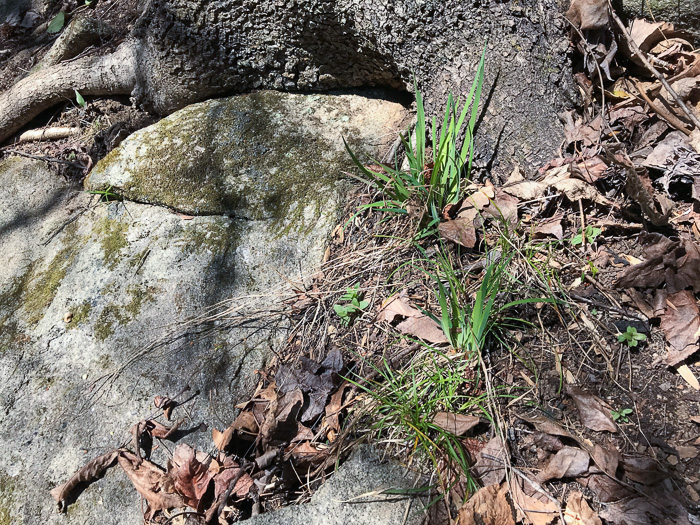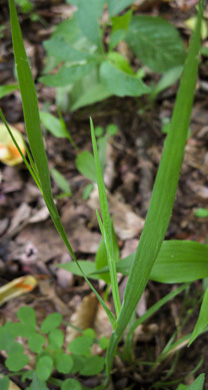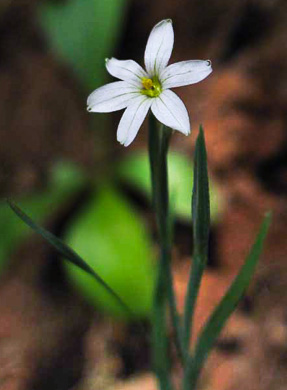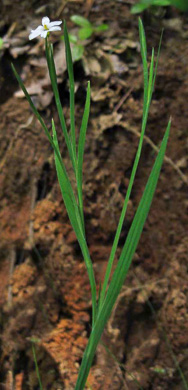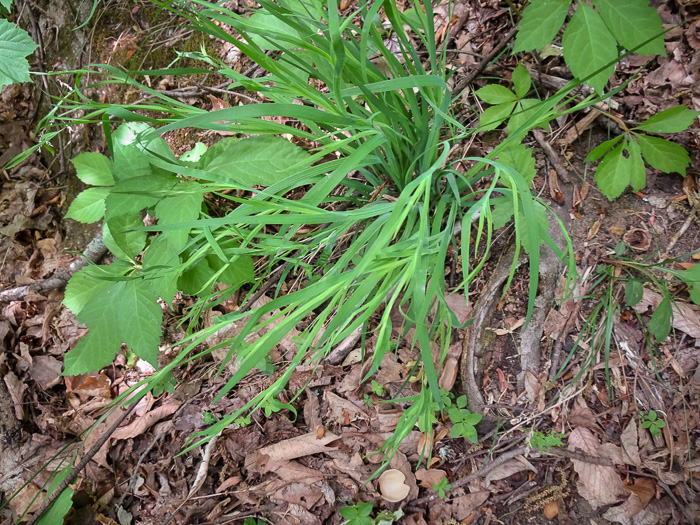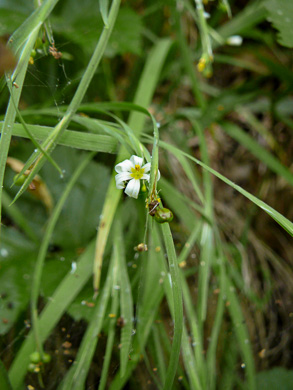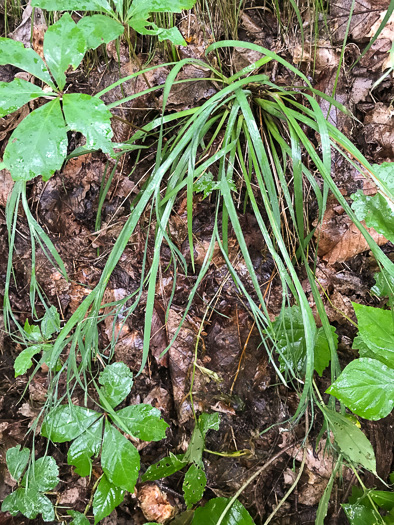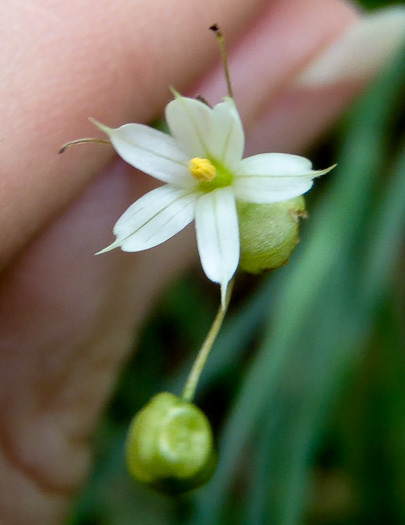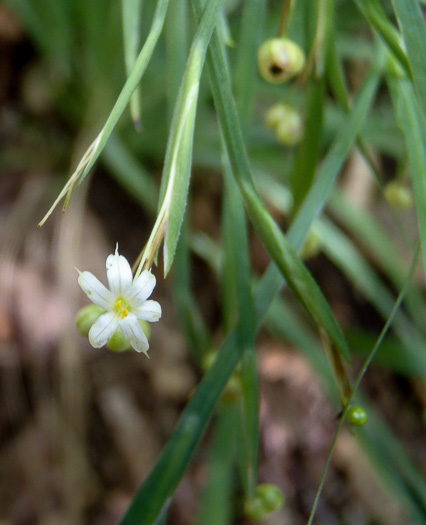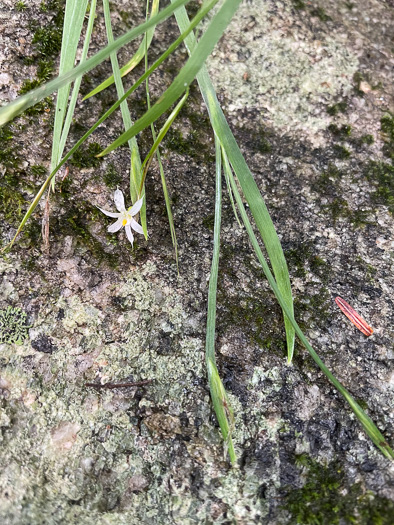Spermatophytes (seed plants): Angiosperms (flowering plants): Monocots: Asparagales
WEAKLEY'S FLORA OF THE SOUTHEASTERN US (4/14/23):
Sisyrinchium dichotomum
FAMILY
Iridaceae
Go to FSUS key
Dig deeper at SERNEC, a consortium of southeastern herbaria.
Learn more about Sisyrinchium from the Vascular Plants of North Carolina.
SYNONYMOUS WITH
PLANTS NATIONAL DATABASE:
Sisyrinchium dichotomum
FAMILY
Iridaceae
SYNONYMOUS WITH Floristic Synthesis of North America. BONAP (Kartesz, 2021)
Sisyrinchium dichotomum
SYNONYMOUS WITH Flora of North America north of Mexico, vol. 26 (2002)
Sisyrinchium dichotomum
SYNONYMOUS WITH Floristic Synthesis of North America (Kartesz, 1999)
Sisyrinchium dichotomum
COMMON NAME:
White Irisette, Isothermal Irisette
To see larger pictures, click or hover over the thumbnails.
Pam Torlina pam_052010_4069
May Polk County NC
Perianth with tepals abruptly spreading in a plane; tepals white, per Weakley's Flora.
Pam Torlina pam_052010_4070_1
May Polk County NC
It has several pedunculate spathes that become progressively smaller upwards, per Wildflowers of the Southern Mountains (Smith, 1998).
Pam Torlina pam_062608_321
June Polk County NC
Tepals recurved at maturity, per Weakley's Flora (2015).
JK Marlow jkm230720_4641
July Greenville County SC
Chestnut Ridge Heritage Preserve
Stems branched, with 2-5 nodes, the branching dichotomous, per Weakley's Flora (2023).
Samantha Tessel sam071221_7122434
July Greenville County SC
Chestnut Ridge Heritage Preserve
Outer tepals 3.3-7.5mm, apex apparently rounded, aristate, per Flora of North America.
WEAKLEY'S FLORA OF THE SOUTHEASTERN US (4/14/23):
Sisyrinchium dichotomum
FAMILY
Iridaceae
SYNONYMOUS WITH
PLANTS NATIONAL DATABASE:
Sisyrinchium dichotomum
FAMILY
Iridaceae
SYNONYMOUS WITH
Floristic Synthesis of North America. BONAP (Kartesz, 2021)
Sisyrinchium dichotomum
SYNONYMOUS WITH
Flora of North America north of Mexico, vol. 26
Sisyrinchium dichotomum
SYNONYMOUS WITH
Floristic Synthesis of North America (Kartesz, 1999)
Sisyrinchium dichotomum
If a search such as "Carex leptalea var. leptalea" doesn't deliver the results you want, try "Carex leptalea".
Or, to minimize chances of a misspelling, try just "Carex le".
Less is more: If "pencil flower" doesn't deliver the results you want, try "pencil".

